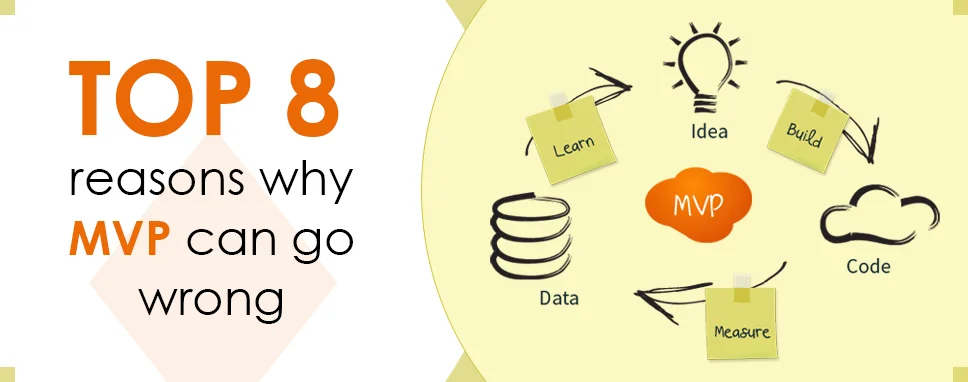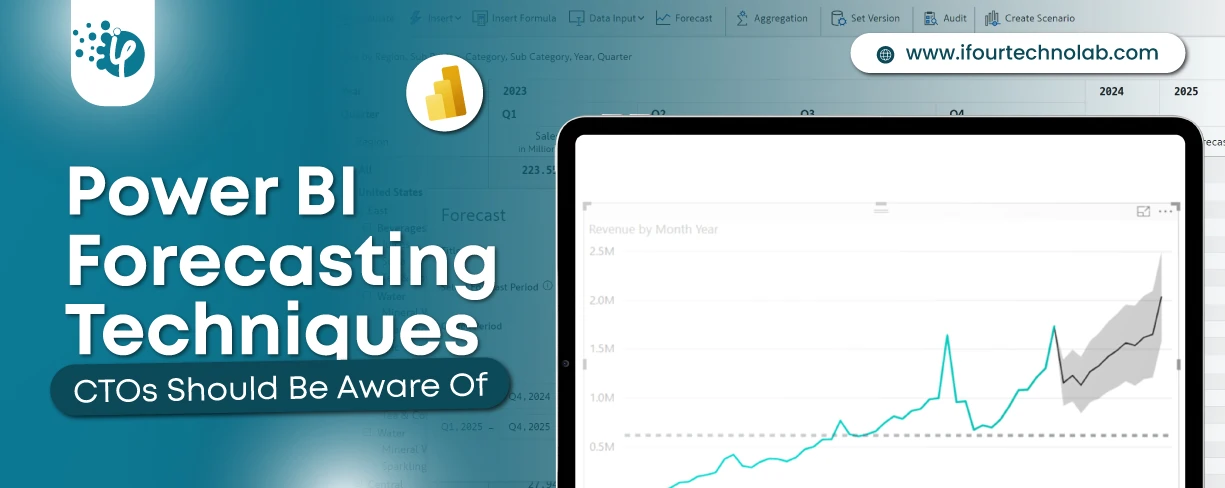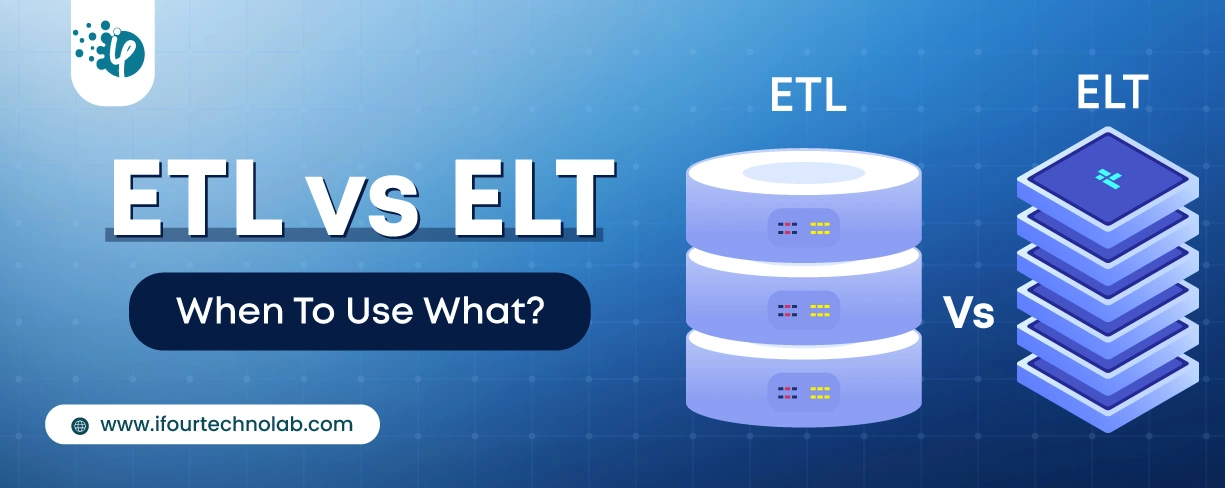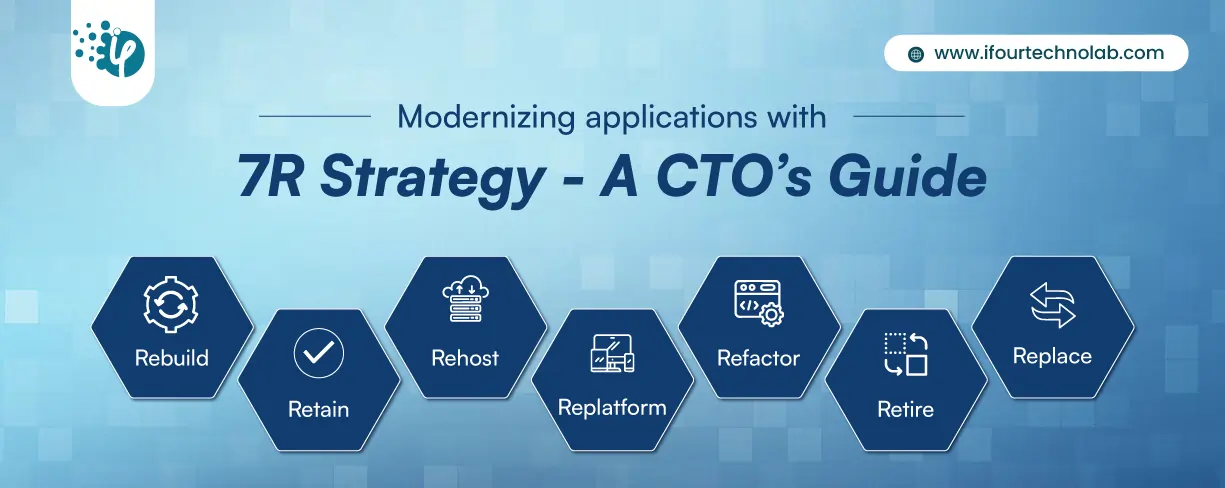How to Do Forecasting in Power BI (Steps & Accuracy Metrics)
Remember our last guide - Power BI forecasting? It revealed things that truly blocks accuracy, both structural and situational. Now it's time to take the next step. Knowing Power...
Listening is fun too.
Straighten your back and cherish with coffee - PLAY !

MVP plays an instrumental role in bringing out the success of a product or software. Some of the influential giants like Zappos, Uber, Dropbox, Twitter, etc. which once were a start-up, have achieved a remarkable feat in the market just because they went with the MVP strategy. Enterprises these days, worry about the product rather than understanding the indispensable needs of the users.
The Minimum Viable Product strategy would help you to keep a perfect balance between the customer needs and the product features. However, some factors like building too many features, ignoring user feedback, prototype, etc. would result in MVP failure.
Failing in MVP would significantly lead to resource wastage and faulty features that bring zero value to your business.
Here, in this blog, we are going to learn about the top reasons why your MVP may get fail.
"When launching a new product, you will start with your MVP and there are some important things to consider. Obviously, you will want your new product launch to succeed so here are a few things to avoid that are top reasons MVP's fail.
Minimum Viable Products typically fail because the creator(s) lack knowledge and understanding of the buyer's problem they are trying to solve. If you don't have a clearly defined target market niche with a clearly outlined problem that you are solving, then there is a very good chance that your MVP launch will fail.
In fact, the top 3 reasons that MVP launches fail are:
“Some of the top reasons why MVPs fail are:
no product-market fit. In other words, the entrepreneur didn't talk enough (or at all) with their potential customers. They had a cool idea and created a product without researching if there was a market for it.
unmet user's needs. Not enough research can lead to users not finding what they are looking for in the MVP and entrepreneurs trying to fit the problem to the solution instead of the contrary.
no prospecting. As indie developers, selling and marketing can be tough tasks for us. Statistically more introverted, we don't have a tendency to put ourselves out there. Unfortunately, the myth that if it is great, people will come and buy it isn't true and leads to MVPs dying in the dark corners of the Internet.”
“Actually, there are 2 main reasons why your MVP may fail. The first one is a problem (pain) fit. This problem a startup addresses must not be in a founder's imagination only. It should be truly confirmed by market research, customer development activities. The founder must clearly understand what target audience has this problem and how they solve it now.
Unable to achieve market-fit solutionOne more reason to fail is if it is possible to say, achieving a market fit. This means how the offered solution fits the market, the product is in demand or not, the target audience is ready to pay for the solution a startup offers in the MVP or not, what feedback do users leave.
Badly developed softwareAdditionally, badly developed software can make MVP fail. Sounds obvious, but founders should keep in mind that the disabled sign-in button can spoil the whole launch.”
“Your MVP may fail if you are solving an imagined problem. * The first rule of an MVP is to find out the market risk. Some of the questions to ask when determining market risk are:
Will your product be necessary to somebody?
People will pay for your product?
Have you identified a market for your product?
These questions help you to figure out if the problem you are solving is real or imagined. A genuine problem will of necessity require a solution, have a ready market, and have people be willing to pay for any solution that takes care of the problem.”
“From the experience of a software development company, most MVPs fail due to missing needs for the product on the market. Often projects are developed with enough user feedback early on - even before it’s “minimum-viable”.
Prototypes and design drafts help a great deal in getting your project on the right path from the start.”
- Peter Thaleikis, Founder of Bring Your Own Ideas Ltd."Here are two of the most damaging (and avoidable) mistakes that entrepreneurs who offer MVPs make:
WIIFM is a classic sales acronym that stands for What's In It For Me? It's the thought that goes through the heads of the prospective buyers of a company's product or service when they're on the receiving end of a sales pitch, and it's the primary driver of whether or not that prospect will open his/her wallet to make a purchase.
If an entrepreneur has not clearly, concisely, and convincingly explained the specific solutions and results that customers/clients will attain if they purchase the MVP, sales will not materialize and the company will have tremendous difficulty gaining traction.
Another area where entrepreneurs have challenges is grasping the difference between the features of their MVP and the benefits that their MVP delivers to customers/clients.
The features of the MVP are the details about how it works, what the response to it has been in the marketplace (awards, reviews), how it came about, how it stacks up against its competitors, etc. Think of it as the me info that seeks to inform and educate prospects about the nuts and bolts of the MVP.
The benefits of the MVP are the exact and proven outcomes that customers/clients will gain if they make a purchase. Benefits are your details that speak directly to the needs, goals, and challenges of prospective buyers.
While the features gain the attention and interest of a prospect, only the benefits will close the sale. And if entrepreneurs are overly infatuated with touting the me features of their MVP and overlook or ignore promoting your benefits, they will never generate the sales - and lay the groundwork for their official launch - that are necessary to survive and thrive.”
“There could be multiple reasons but one I would say would be the top one is that lack of the most important feature. MVP is all about the core functions so if your MVP is lacking the main feature it’s not the real MVP. Also, it's really important that too many features aren’t added, since with MVP you have to understand if it will even work for your users and there is a need in the market for it.”
“Do Your Homework: Even if your product solves a real problem, it doesn’t mean much if somebody else already solved it. Do some research. If your market is already monopolized by a few leaders or full of bunches of similar solutions, your chances of success are slim. It doesn’t matter how strongly you believe in the greatness of your product if your target audience is happy with what they already have. Unless you can convince potential customers that your MVP offers something unique and valuable, it’ll just be a version of what they already have and don’t want to replace. “
“There are a number of reasons why an MVP can fail. Paul Graham, the recently retired co-founder of Y-Combinator is famous for telling founders to, build something people love. Many founders get caught up in ideas that nobody wants or are problems nobody (or not enough people) want to be solved.
The single biggest reason why an MVP may fail is that the company or founders didn't use any techniques to validate their ideas before starting to develop an MVP. This can be doing market research to understand what's already out there and then iterating your idea in such a way that the idea appeals to a broad market or by actually going out and talking to people. Rarely does the second part happen? MVPs can also fail because you don't understand your audience, buyer, market, or competition.
Most of the time we jump into building something because we're blinded by our passion for our project. I've certainly done that myself. That's okay -- as either a founder or software developer, you should have a tolerance for failure. Plenty of books have been written about how to run lean startups and failing forward. Both of these principles advise us to try and make mistakes. One says make less costly mistakes (lean startup) and the other says, learn from your mistakes (fail forward) as often as possible. Only by making mistakes can we learn and do somethings right. I love this quote from Michael Jordon, I've missed more than 9,000 shots in my career. I've lost almost 300 games. Twenty-six times, I've been trusted to take the game-winning shot and missed. I've failed over and over and over again in my life. And that is why I succeed.
Your MVP may fail. Especially if you're doing something nobody else has done before. You may build something nobody wants. You may build something people want but not in the way you envisioned. The important thing is to understand why it failed (or may fail), iterate, pivot if necessary, and come up with better or different versions of what you have to offer.”
- Steve R. Smith, CEO of Consumer Affinity“Top reasons for failure:
The MVP is pretty ‘built out’ in its functionality - e.g. has lots of features, some automation - but fails to be clear & usable on its main value proposition
You are not marketing the MVP correctly - e.g. the product/ service may have lots of appeals, but you are targeting the wrong audience or using the wrong channels to drive traffic to the MVP.”
- Julia Lemberskiy from J.J Studio“An MVP can fail for various reasons, and knowing them can assist you with limiting risk and remain in control of the project.
Here are two main reasons for an MVP flop:
Prototyping is a very important phase of project development, which should be led before the development phase. It helps you distill your idea for MVP development by getting feedback from your users.
If you skip this step your MVP may not succeed. The idea may not be implemented perfectly and the development team may take too much time understanding specifications, and most importantly, you may lose a chance of getting early-stage feedback from your users. and above all, you may lose an opportunity of getting early-stage feedbacks from your users.
Ignoring User Feedback
Ignoring feedback from users defeats the general purpose of developing an MVP. Make a rundown of the common complaints and ensure that you address those issues.
Dealing with feedback not simply shows that you care for your users, however, it helps in retaining them as well. There isn't anything worse than an unsatisfied customer.
To conclude, there's no 100% foolproof way to ensure the success of your MVP, but you can minimize the chance of failure as much as possible.”
Minimum viable products can fail for a lot of reasons but to me, the biggest chance for failure comes from not doing market research/user feedback and not learning from them. No matter how great you think your product is you won’t know until you gather the opinions of the people you think are going to buy it. Also, it’s not enough to collect the information, you have to learn from it and apply the new insights to your product if you want it to succeed. If you just want to make something and don’t care if anybody will buy it, go ahead and skip market research and feedback. On the other hand, if your goal is to sell bunches of your product, you need to know what people want and have the wisdom to create something they will actually pay money for.
“The most important reasons that I've noticed so far include such organizational mistakes as:
Not clearly specifying what you need and what result you want to generate out of the project. For example, if you want a Cloud-based LMS that will maintain the system and will carry out any updates and upgrades, it'll mostly be designed to ensure that the product strategy and its vision are aligned with market needs. Don't expect it to be installed as a separate LMS. In this case, users can only login with a username and password.
Poor communication with software development vendor. Your developers should understand what you need and should be 100% aware of your plans and reasons. Make sure you're working as a team. To organize such a process, you can simply use project management tools like Jira and Trello.
Ensuring that it offers more features/functions than it actually does. You should understand that MVP is mostly made to attract early - adopter customers.
Not making sure that after the development you should guarantee yourself with software development maintenance and support.”
“In my experience, the most common reasons an MVP product fails are:
You could sum nearly all MVP failures up as: the MVP didn't do a good job solving a big enough problem, for a big enough group of people.
The three keys to success with an MVP are a big enough group of people, who have a big enough problem they want to solve, and you've built a product that does a good job solving that problem (and getting it in front of the people).”
- Alan Myers, Developer & Security Consultant @ Website Security Solutions, LLC - Alan Myers, Developer & Security Consultant @ Website Security Solutions, LLC
“Here are my top reasons for an MVP failing:
1. *Lack of market fit. * The product can be the most amazing thing in the world, but if it doesn't satisfy the user's exact needs, it's pointless. This is by far the most probable reason for an MVP failing.
2. *The product is too buggy. * If you are nailing the user's exact need but some features crash or cause annoying behavior to occur in your system, you may scare off users.
3. *Lack of timing. * Sometimes, a need your MVP satisfies is a temporary need, or other competitors came out with their own MVP before you lose important momentum. For example - if you had an idea of creating a revolutionary thermometer and have implemented an MVP within the first month of COVID, your MVP would have a high chance of success. On the other hand, if you had waited a few more months, many other companies have already beat you to it and your chances of success greatly diminished.”
Minimum Viable Product strategy is undoubtedly the best way to succeed your product or software in the market. As there is no shortcut for success, the only way is to understand the indispensable needs of the user and proper market research. Enterprises should never plan their MVP by making assumptions rather they should make a real market analysis. Keeping a high focus on all these factors, we have learned the top reasons for MVP failure. This would help you to minimize the failure concerns of MVP for your product.

Remember our last guide - Power BI forecasting? It revealed things that truly blocks accuracy, both structural and situational. Now it's time to take the next step. Knowing Power...

It's amazing to see how Data teams today are racing ahead - moving from traditional warehouses to cloud-native platforms, lakehouses, and real-time architectures. But in this rush,...

Think about the last time CTOs spent most of their time fixing old systems. Updates were slow, servers were expensive, and adding new features took time. Now, things have changed....